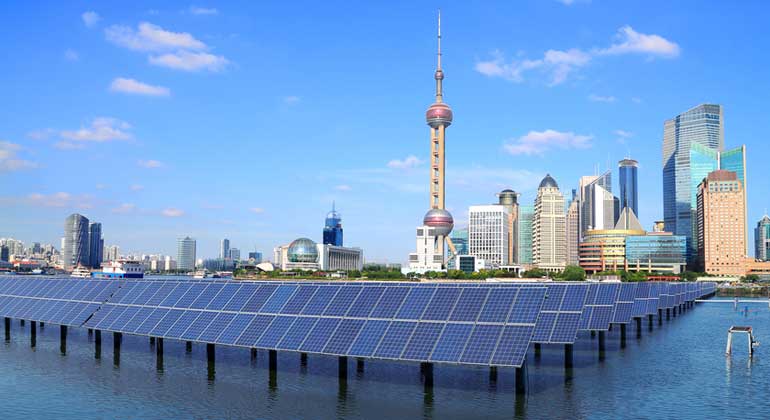Greenpeace: China to see $782bn investment in solar, wind, by 2030
China is set to attract as much as 5.4 trillion yuan ($782 billion) in wind and solar sector investment between 2016 and 2030, off-grid solar stands out as the most economical way to address energy poverty, and curbing carbon footprint brings further environmental and economic benefits, finds a report by Greenpeace.
The message is clear – China is staying true to its energy transition blueprint.
In order to deliver on its pledge to increase the proportion of non-fossil fuel sources in primary energy consumption to at least 20% by 2030, China is set to pull in 5.4 trillion yuan ($782 billion) in investment, finds a new report by environmental organization Greenpeace, drafted in collaboration with five industry associations and research groups.
Reflecting the great investment potential of the wind and solar sectors is their contribution to the national GDP.
In 2015, wind and solar power generation contributed RMB 0.31 trillion to China’s GDP. However, the figure is expected to leap to RMB 1.57 trillion by 2030, the report finds, adding that further economic benefits of the two industries lay in their potential to create job opportunities for roughly 2.4 million people by 2030, as well as indirect job opportunities for 5.3 million more.
Switching to renewable energy sources also brings financial gains in the form of external environmental benefits, which are calculated based on the difference between the environmental cost of coal and that of wind and solar PV energy.
Greenpeace’s report states that in 2015 China’s wind and solar PV added approximately 0.16 RMB/kWh and that the figure is expected to reach 0.3 RMB/kWh by 2030. This means that the total external environmental benefits that come as a result of replacing fossil energy sources by 2030 will amount to RMB 456 billion ($66 billion).
Shifting away from coal
According to the report, China will need to increase its wind and solar PV capacities up from 4% of total power generation in 2015 to 17% by 2030 in order to meet its non-fossil fuel commitments.
Assuming China meets its target, wind and solar power could reduce fossil fuel consumption by nearly 300 million tons of standard coal by the end of 2030, which, according to the report, are equivalent to France’s total primary energy consumption in 2015.
Given that China’s coal-fired power plants consume massive amounts of water and are concentrated in water-scarce areas, they pose an even greater threat to the country’s arid northern provinces. Therefore, the development of solar PV and wind projects bears an even greater importance.
In 2015, solar PV and wind reduced water consumption by approximately 0.57 billion m3, and they are expected to save 3.6 billion m3 of water per year by 2030, the report states.
In one of its previous reports, Greenpeace help up China as a bright example of the implementation of far-reaching clean energy policies, which in 2016 drove a 62% fall in new coal power plant construction globally.
Starring role of off-grid solar
In recent years, China’s government has poured vast resources into addressing energy poverty. Between 2013 and 2015, the government spent a total of RMB 24.78 billion on expanding electricity access.
Although a mere 16.5% of that money was spent on off-grid solar PV installations, the technology was responsible for 43.4% of new energy access achieved in China in that period, states the report.
As a result, off-grid solar proved to be the most economical way of supplying electricity to remote areas and provided other nations suffering from electricity access concerns with an example to follow.








